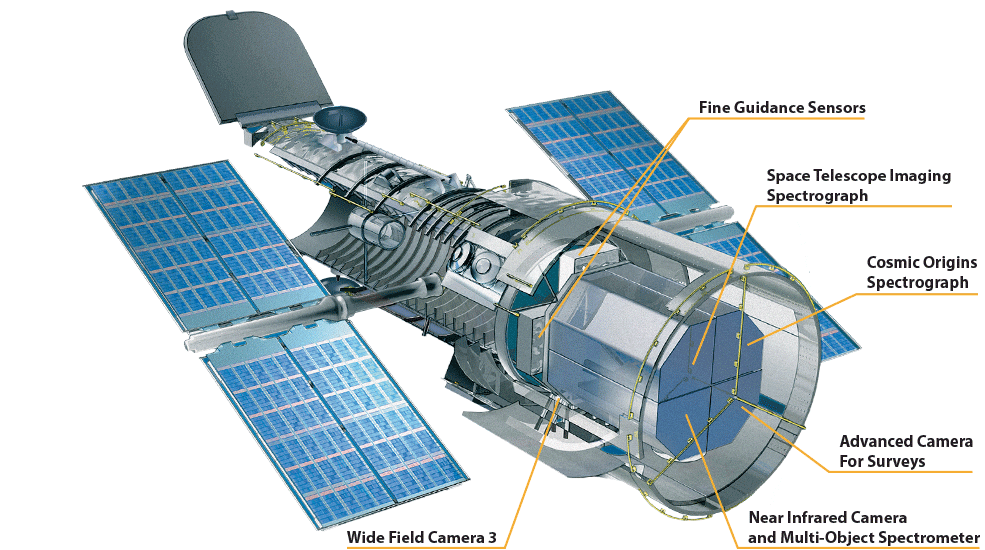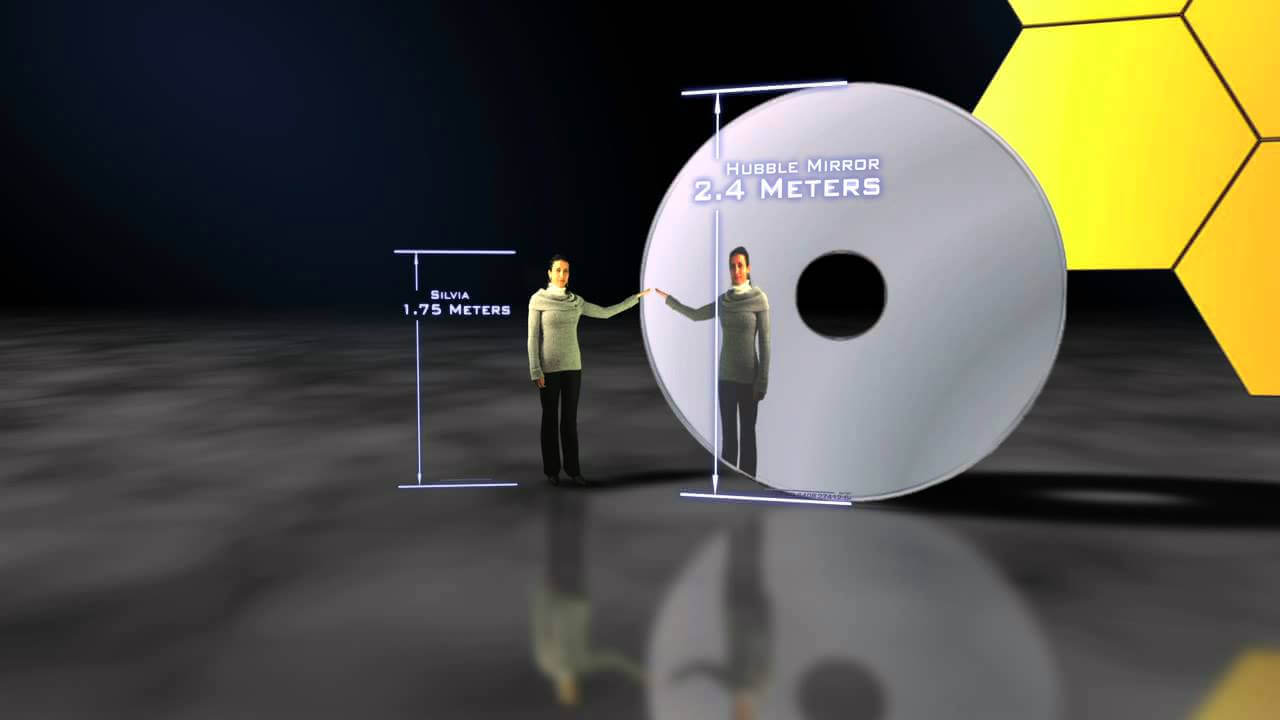The Hubble Space Telescope is one of the marvels of NASA in collaboration with other Space Agencies such as the United States Space Program and the European Space Agency. It is a 43.5 feet large (13.3 metres wide) telescope placed out of the haze of Earth’s atmosphere. It is as large as a truck or a school bus and as heavy as two African Elephants.
Following are the detailed dimensions of Hubble Space Telescope:
- Width/length: 43.5 feet or 13.3 metres
- Diameter: 4.2 metres or 14 feet.
- Weight: 24,500 pounds or 11, 110 kilograms (at launch) and 27,000 pounds or 12,247 kg (Post SM4).
- Primary Mirror Size: 7.8 feet or 2.4 metres.
- Secondary Mirror Size: 12-inch or 0.3 metres.
- Solar Panels: 25 feet each (there are two solar panels).
Hubble Space Telescope was launched into space on the 25th of April,1990. It was deployed into low Earth orbit about 340 miles or 547 km far from Earth. The Telescope was lucky enough to be deployed in space high enough where it could have an unobstructed view of space. The telescope is so good at focusing on its target that it can legitly focus more than 7/1000th of an arcsecond, surprisingly, without any deviation.
Some of the components of Hubble Space Telescope include:
- Wide Field Camera 3: WFC3 was mainly installed for the detailed study of the phenomenon of distant galaxies, distribution of young and old stellar systems and objects present in Earth’s solar systems. It was installed in the 4th servicing mission.
- Cosmic Origins Spectrograph: The main role of COS is the search for the formation of faint stars and galaxies. It has a sensitive ultralight spectrograph which enhances the ability of Hubble to capture UV light up to 10 times and 70 times its ability to peer at fainter objects like OB stars, white dwarfs and cataclysmic variables. It was installed in the fourth servicing mission.
- Advanced Camera for Surveys: The primary purpose of installing ACS in HST in the third servicing mission was to extend the wavelength range of the telescope up to 10 percent. This instrument provided NASA with uniquely high sensitivity and exemplified photos of the universe which eventually unleashed the inner phenomenon of stars, nebulae, clusters and many more denizens present in space.
- Fine Guidance Sensors: FGS is the pointing instrument that basically helps the telescope to point on a certain location in the sky with high accuracy and precision. The instrument consists of three fine guidance sensors with a collection of mirrors, lenses, prisms, servos, photomultiplier tubes and beam-splitters.

🔬 Subscribe to SciMail
Get the latest science discoveries straight to your inbox!
It has accomplished more than a million observations till date. During its 31 years journey, astronauts had completed 5 servicing missions for its accuracy maintenance.
It completes its one orbit around the Earth in about 1 hour and 35 minutes (95 minutes). The telescope is capable of orbiting 17,000 miles per hour (27,000 kph) and orbits Earth about 15 times a day. It orbits Earth in a circular motion on Newton’s third law of motion which states that “every action has an equal but opposite reaction”.
A major drawback of the Hubble Space Telescope being in low Earth orbit is that it is mainly solar-powered (has two 25 foot solar panels) which is why it overly gets heated due to direct contact with the Sun. It also absorbs heat coming from Earth and as a result, its infrared detectors start to dazzle. This problem is particularly addressed in James Webb and it has been destined 1 million miles above the Earth in order to keep the telescope cold enough for its infrared detectors to work properly.
The telescope costed around 1.5 billion US Dollars, however its successor, James Webb Space Telescope is much more expensive which cost 10 Billion US Dollars for its construction and launch as well. Since it’s been 31 years now, it is predicted that Hubble will stay 10 to 20 more years in space before it retires.


Leave a Reply